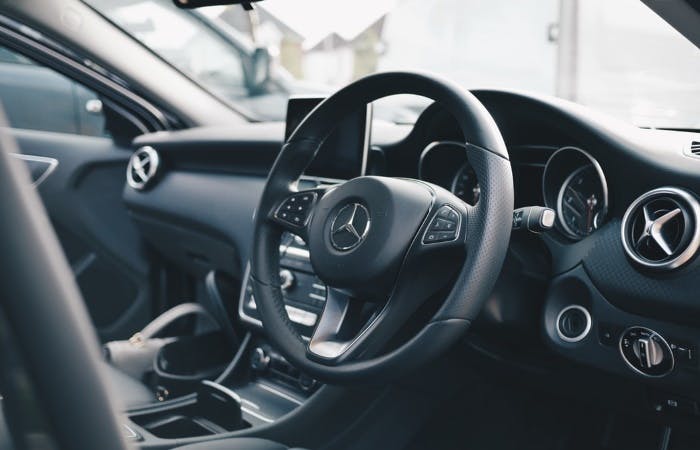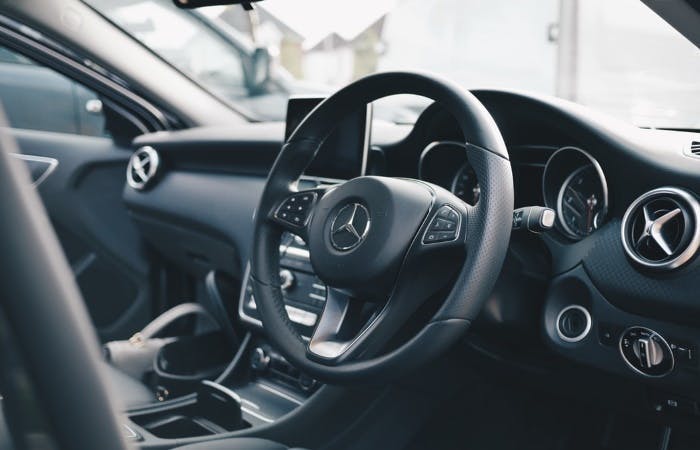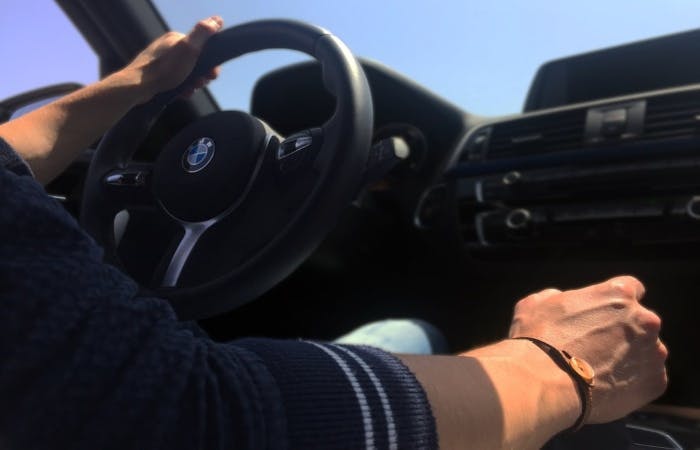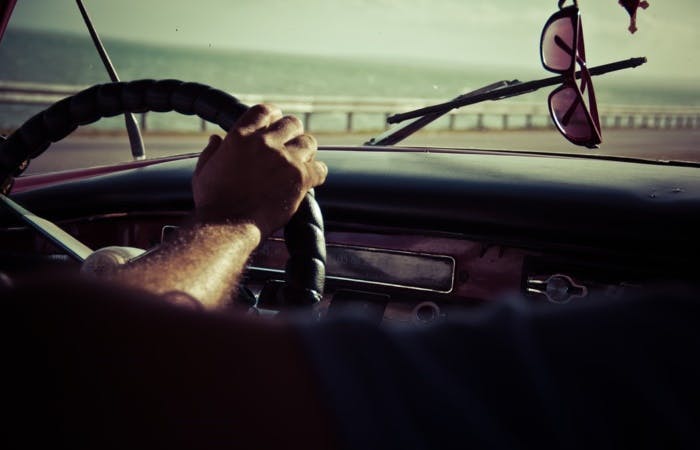
There's nothing quite as off-putting as getting to grips with driving a new car. All of the familiar nuances that you're used to with your previous car are now thrown to the wind. From your clutch's biting point to the sensitivity of your brakes to where each control is located, you just don't realise how accustomed you are to handling your car until you make the switch to a new one. If you're a creature of habit that can't quite make heads or tails of driving a new car, you can let out a sigh of relief. There are plenty of ways you can help make the adjustment period a bit easier.
Whether you've recently bought a new car, need to borrow someone else's or are attempting to hire a car on holiday, you should know exactly what steps to take to ensure you get to grips with handling a new car quickly. Trust us: you'll be brimming with confidence in no time!
Adjusting to driving a new car
If you've only just passed your driving test, you might only have experience with driving your instructor's car. Once you've got your own car, however, you can find yourself completely thrown off guard. Not only do you have to get used to driving unsupervised, you've also got to adapt your driving style and routine to suit a new car. Of course, even experienced drivers who have owned multiple cars over the years can suffer from the same problem.
Habits are hard to break, so it's easy to see why so many drivers actively dislike getting to grips with a new car. It's important that you push past this discomfort, however. After all, if you're stiff and uncertain in your new car, it will undoubtedly have a negative effect on your driving. If you'd like to avoid any mishaps, you'll want to carefully make your way through our step-by-step guide.
Before you head out
Ready to set off in your new or used car? Hold your horses, eager beaver! Before you take your car out for a spin, you first need to get to grips with its layout and controls. Even if your new car is a similar model to your previous one, you will still need to make adjustments and adapt to its different features.
Make adjustments

It's highly unlikely that you'll ever get into a new car and find that everything suits you perfectly. You will need to make changes to the position of your steering wheel, seat, mirrors and headrest. You will have covered this when you first started learning to drive. Your instructor will have shown you how to make adjustments to ensure you're comfortable and positioned correctly in the vehicle. We'll walk you through the steps anyway, just in case you've forgotten a few things!
Steering wheel
Ideally, your steering wheel should be around 12 inches or so from your chest. This will leave ample room for your airbag to inflate if you end up in an accident. Try to sit back in your seat—with your shoulders touching the backrest—in order to check that your wrists can rest at the top edge of the wheel without causing any discomfort.
Seat
You will need to make a few adjustments to your seat to get it just right. Firstly, you'll want to slide your seat until your knees bend slightly when you depress the clutch. If your knees bend too much, or not at all, you'll need to adjust accordingly. Next, you will need to make sure your seat is raised enough to give you a clear view of the road ahead. The backrest should be at a 90 degree angle (give or take) to ensure you're upright.
Headrest
As for the headrest, you'll want to raise or lower it until the top lines up with the top of your head. You'll need to check that it doesn't obstruct your ability to turn your head to check your blindspots.
Mirrors
For obvious reasons, you shouldn't drive off without first checking that your car mirrors are positioned correctly. Once you've messed about with the height of your seat, you'll need to alter the angle and position of the interior mirror. It needs to give a full, clear view of the road behind you. (You don't want to be caught unawares by those pesky tailgaters!). Similarly, your side mirrors should be adjusted so that you get a slight glimpse of the sides of your car but also the horizon in the rear.
Now, it might take you mere minutes to make your way through these steps or it might take you an hour. It doesn't matter how long it takes; it needs to be done. You need to take a leaf out of Goldilocks' book and get things just right before you set off.
Locate the controls
It's all well and good getting to know your car as you drive, but if you don't know where certain controls are then you're going to find yourself in a tricky situation in no time. Just imagine the chaos that would unfold if you didn't know where your windscreen wipers were whilst driving in torrential rain!
If you're a hands-on learner, you might decide to just sit behind the wheel and mess about with the controls at random until you're familiar with them. If you're a theoretical learner, however, you'll want to grab your vehicle's handbook and swot up! The important thing is that you take your time to familiarise yourself with the controls until you can located each one without having to pause. You need to know where everything is so that you're not scrambling around when driving on the motorway, for example.
If you're not having much luck with memorising the new locations of your controls, get a family member or friend to test you. They can sit in the passenger seat and ask you to point out each control. If you want to take a walk down memory lane, you could even get them to ask you some 'show me, tell me' questions. It's a great way of figuring out if you really know your stuff. Example questions include:
- How would you wash and clean the rear windscreen?
- Can you switch on your dipped headlights?
- How would you demist the front windscreen?
Get to grips with new proportions

Once you're familiar with the interior of your new car, you'll want to get out and examine the exterior. Take a slow walk around your new car to really gauge its size. Does it look much bigger than your previous car? Then you know you'll have to be a bit more careful and aware of your position when trying to parallel park. Is it smaller? Congrats—you might finally be able to enjoy getting into those tiny parking spaces!
Try to stay aware of your car's new size as you drive. You'll need to alter your road position to adjust for its new proportions.
Give it a safety inspection
We like to advise all PassMeFast readers to frequently check their cars to ensure they're in tip-top shape. Whether you've bought a used car or a brand new one, it's vital that you give it a proper looking over. To start, check the condition of your tyres. They should have a minimum tread depth of at least 1.6mm and their pressure should match the recommended figure found in your vehicle's handbook. You'll also want to give your front and rear lights a check.
Next, look under the hood of your car. You'll want to make sure a few things are in order before you start moving:
- Do you have a safe level of hydraulic brake fluid?
- Does the engine have a sufficient level of engine coolant?
- Does the engine have a sufficient level of oil?
Start things slow
Once you've finished adjusting things in your car and figuring out where everything is located, you can finally start moving. Before you jet off onto the motorway, however, we'd advise you get to grips with your new pedals first. Even if you've had new cars before, your new pedals will feel alien to you at first. Don't worry—things will feel normal soon enough.
To get used to the new pedals and overall feel of your new car, we'd suggest you first take your car out to an empty car park or quiet residential area. Essentially, you want a place where you won't be disturbed and you won't obstruct other drivers.

Clutch
Remember how long it took you to master the clutch in your driving lessons? Though getting used to a new clutch won't be half as traumatic as that, it can be pretty difficult at first. After all, your muscle memory will have you attempting to use the clutch in the same way you would in your previous car. Unfortunately, biting points can vary between cars. Your new car's biting point could be much higher or lower than what you're used to.
Before you drive around properly, you should turn on the ignition, release the handbrake and try to find the biting point. Try to do this over and over again for a few minutes. Find the bite, let it go slightly and then start again. Of course, you'll want to be on an even surface when you attempt this.
Brakes
Braking response times can also vary from vehicle to vehicle. If your brakes are more sensitive than you're used to, you'll need to touch them more lightly—or vice versa. In either case, it will require a bit of adjustment for you to get used to it.
Accelerator
As with the brakes, you might find that your new accelerator pedal requires more or less force than what you're accustomed to. Try to be gentle with it to start with, as you might be dealing with a more powerful engine and you really don't want to overdo it.
Test yourself

Once you've spent half an hour or so getting a feel for your new pedals in a quiet area, it's time to set off and test yourself on the roads properly. You'll want to try tackling a wide variety of road types and features, as it will help you get to grips with your new car that much faster.
Town driving
Whilst you might usually find stop-start driving to be monotonous and road-rage inducing, it's actually really handy in helping you get used to driving a new car. It forces you to master your new clutch, brake and accelerator pedals quickly. Before you know it, your muscle memory will adapt to suit your new car and you'll be breezing on down the motorway without a care in the world.
Town driving is a good place to start as it will require you to mostly stick to the lower gears. That being said, you'll want to be especially aware of your positioning on the road. You'll encounter plenty of parked cars and pedestrians, so pay attention!
Dual carriageways and motorways
Once you've tackled town driving, it's finally time to move your way up through the higher gears. Now, you might find yourself having to glance down at your speedometer a bit more frequently with your new car. It can take a bit of an adjustment period to get used to the feel of a new accelerator pedal. Try to take it easy, though. You don't want to end up slapped with a fine for speeding!
Manoeuvres
One of the parts you might find most difficult about driving a new car is manoeuvres. Love them or hate them, however, manoeuvres are a vital part of most drivers' lives. They require a lot of concentration, awareness and familiarity with your car, so you'll want to do some practising as soon as you can.
Been a while since you've attempted your manoeuvres? That's fine. We've got some handy manoeuvre guides that will walk you through them step-by-step!
Don't forget your essentials

So you've gotten to grips with driving a new car. What's next? Making sure you've got everything you might need for your daily travels, of course! For starters, you'll want to stash away those little niggly things that you always forget about—from your sunglasses (what an optimist!) to change for the car park. If you're not good with directions, you'll also want to grab your trusty sat nav.
Most importantly, you'll want to pack your essential car items. From everything you might need in the event of a sudden breakdown to winter essentials, there's a lot to consider. Of course, you'll want to be sensible with how much you keep in your car. You've only got so much storage space after all!
If you've gone to the effort of getting a new car, you'll want to make sure that it stays safe and secure. Read our handy top tips to keep your car secure!
Make sure your paperwork is in order

Insurance
Before you start groaning, insurance is an unavoidable part of being a driver. You simply can't get by without it. It is illegal to drive on UK roads without insurance, even if it's a quick, five minute drive. If you're caught driving uninsured, you could get a fixed penalty of £300 and 6 points on our licence. If your case goes to court, you even face the prospect of being disqualified from driving altogether.
The minimum insurance cover required by law is third party, so make sure you've got it in place before you take your new car out for a spin. Need some insurance advice? Not to worry! We've got some handy guides to help get you up to speed:
Vehicle tax
If you though the boring part was over, think again! There's one last thing that you need to sort out: vehicle tax. It is compulsory for almost all vehicles on the road to pay vehicle tax. Even if you're exempt from paying vehicle tax, you've still got to apply for it. Trying to get by without it could result in a fine, penalty points or disqualification from driving.
You can pay for your vehicle tax online, over the phone or at a Post Office that handles vehicle tax. To do so, you'll need your vehicle reference number from either a V11 form, your vehicle log book or a new keeper slip. You can get a better look at what this process entails in our guide to vehicle tax (vehicle excise duty).
Not sure if you've taxed your vehicle already? You can check to see the status of your vehicle tax online using the DVLA's vehicle tax tool.
Subscribe for driving advice, offers & more
We'd love to let you know about our courses, news and offers via email. You may unsubscribe at any time.
Star Genie Limited trading as PassMeFast. Company number 10093359
Copyright © 2024 owned by Star Genie Limited
PassMeFast, Blue Tower, MediaCityUK, Salford, M50 2ST
